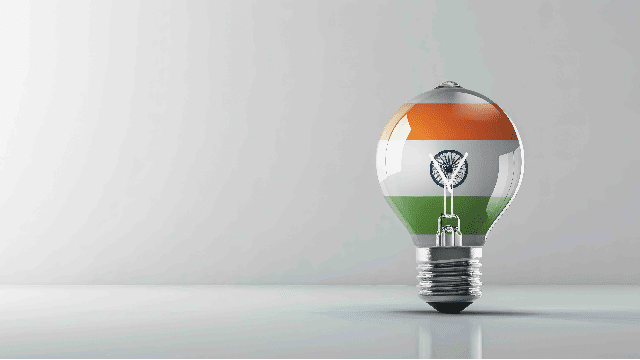Reflets Magazine #153 | Durgesh Maru (E15): “India Aims to Triple Its Renewable Energy Capacity by 2030”
In Reflets Magazine #153, Durgesh Maru (E15), cofounder at SunInfra Energies and Net Zero Pro in Mumbai and President of ESSEC Alumni's Mumbai Chapter, challenges India’s aim to triple its renewable energy capacity by 2030. Will it be enough to decarbonize its economy? Here is a free online version of his interview… Subscribe to get the next issues (in French)!
Reflets Magazine: What is India's energy mix today?
Durgesh Maru: The country’s energy mix comprises approximately 55-60% coal, 25-30% renewables (mainly solar and wind), 6-8% natural gas, 7-10% oil, and 2-3% nuclear. Solar capacity in particular has been seeing exponential growth, driven by the falling costs of solar panels and by the National Solar Mission, which includes various subsidies and incentives.
RM: What actions is India taking to drive forward the energy transition?
D. Maru: The government is promoting energy efficiency, investing in clean technologies, and leading policy reforms such as auctioning renewable energy projects. Other initiatives include the Green Energy Corridor, which focuses on facilitating the integration into the grid, the Ujwal DISCOM Assurance Yojana (UDAY), which helps improving the financial health of power distribution companies, and the International Solar Alliance, which is fostering international cooperation. That being said, India could go further by phasing out fossil fuel subsidies, enhancing grid infrastructure to accommodate renewable energy intermittency, and promoting decentralized energy systems.
RM: At your level, how does your company contribute to India’s energy transition?
D. Maru: At SunInfra Energies, we specialize in the development and turnkey execution of solar power plants for the Commercial & Industrial energy consumers. The company provides an end-to-end solution right from evaluation of the energy requirements, design and engineering, global procurement of the equipment, installation and commissioning, to operations and maintenance of the solar plants for them to perform at optimum levels throughout their entire lifespan.
RM: What are the prospects for India’s energy mix in the years ahead?
D. Maru: India aims to reach 450 GW of renewable energy capacity by 2030 (against 150 GW today), reduce emissions intensity, and improve energy access. This can be achieved as the country has abundant renewable sources and technological means, however it implies enhancing infrastructure, ensuring policy stability, attracting private investment, and fostering innovation. Additionally, addressing socio-economic challenges and ensuring inclusivity in the process will prove crucial. Another concern is the political dynamics within India: regional interests and bureaucratic hurdles may hamper government initiatives and incentives.
Interview by Louis Armengaud Wurmser (E10), Content Manager at ESSEC Alumni
From Reflets ESSEC Magazine #153. Read a preview. Subscribe to get next issues (in French).
Image : © AdobeStock

Comments0
Please log in to see or add a comment
Suggested Articles

